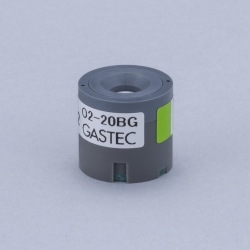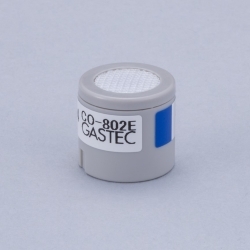The silica gel tube is used in work environments where organic-solvent vapour is collected. Generally the silica gel tube is suited for substances of high polarity (e.g. acetone, methanol, etc.).
1 layers,Charging quantity : 600mg

GASTEC CORPORATION - For all types of gas and vapour
The silica gel tube is used in work environments where organic-solvent vapour is collected. Generally the silica gel tube is suited for substances of high polarity (e.g. acetone, methanol, etc.).
1 layers,Charging quantity : 600mg

The silica gel tube is used in work environments where organic-solvent vapour is collected. Generally the silica gel tube is suited for substances of high polarity (e.g. acetone, methanol, etc.).
2 layers,Charging quantity : 150/75mg

The silica gel tube is used in work environments where organic-solvent vapour is collected. Generally the silica gel tube is suited for substances of high polarity (e.g. acetone, methanol, etc.).
1 layers, Charging quantity : 300mg

This galvanic cell sensor that measures oxygen concentration has been in use since the mid-1960s to detect (and alert) oxygen deficiency throughout all industries.
Controlled potential electrolysis sensor
From the mid-1960s, controlled potential electrolysis type sensors have attracted much attention as a means for sensing and measuring air pollutants such as sulphur dioxide and nitrogen oxide right at the source where they are generated and they are increasingly being used in such contents. In the latter half of the 1970s, they came to be more widely accepted as carbon monoxide or hydrogen sulphide measuring instruments alongside other combustion type or galvanic sensors, not only for flue gas monitoring or occupational hygiene and safety applications.
Catalytic combustion sensors are classified according to the method employed to measure combustible gas, and they have come to be widely used to prevent methane explosions in coal mines from about 1959. Since then, they have been improved considerably and are now more widely used throughout various industrial sectors as reliable sensors.
Non-Dispersive Infrared Absorption Sensors
The principle of non-dispersive infrared absorption uses the properties of individual gases in absorbing specific frequencies of infrared light which the sample gas is exposed to. The sensor measures the composition and concentrations by analysing the frequencies and extent of light absorbed. As all infrared light of all frequencies emitted from the light source is utilised, it is referred to as "non-dispersive."


Galvanic cell sensor
φ15 x 14 4g : GOT-110A / GOT-110A-2 / GOT-110B / GOT-110B-2









Controlled potential electrolysis sensor
φ15 x 14 3g : GOC-200

Controlled potential electrolysis sensor
φ15 x 14 3g : GOC-200
